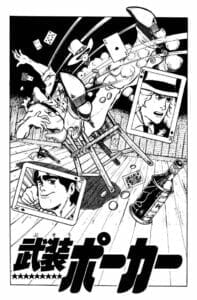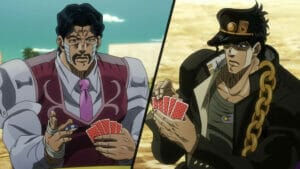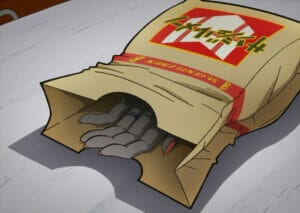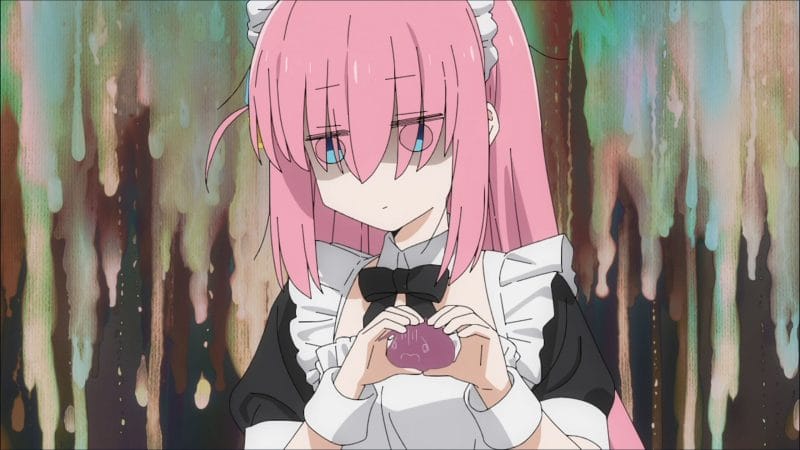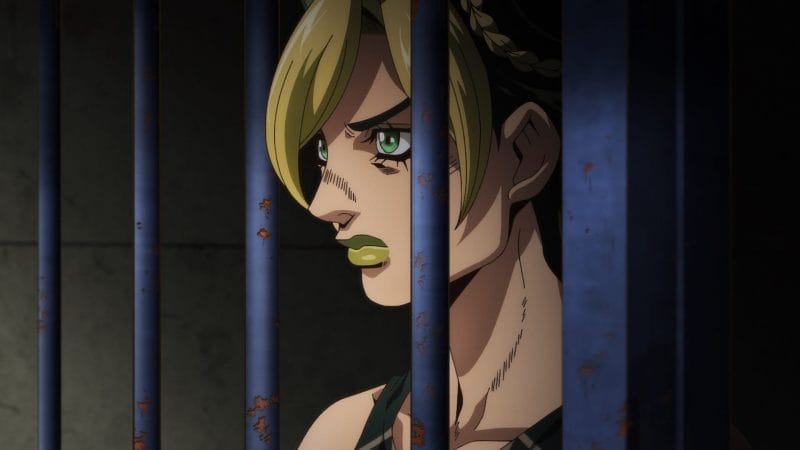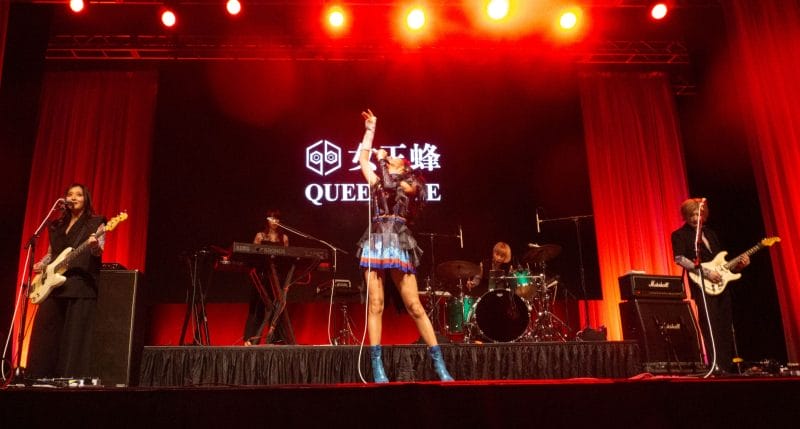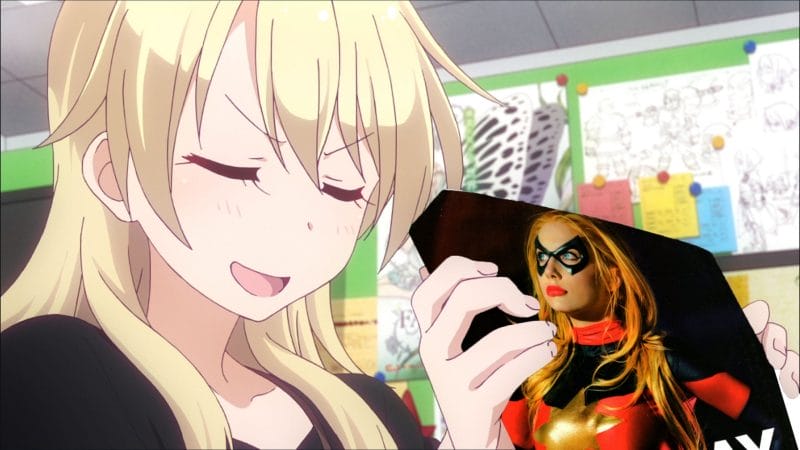JoJo’s Bizarre Adventure is rightly praised for its absurd and flamboyant presentation, from seemingly impossible poses to outrageous battle strategies to off-kilter humor. Peeling away this façade reveals a solid story engine that allows those iconic moments to shine. How does author Hirohiko Araki make the series so engaging?
At its core, JoJo’s is a thriller. Araki employs tried-and-true plot mechanics from masters of suspense to captivate the viewer. In his book Manga in Theory and Practice, Araki cites Hitchcock as one of his greatest influences, drawing on Hitchcock’s definition of suspense to guide his own work. Suspense is the stretching out of anticipation – we see what’s coming, but we’re waiting for it to hit. Suspense is often fearful, like creeping through an eerily silent house. But it can also be heart-fluttering, like confessing your love to someone and awaiting their response.
Araki wields suspense to craft thriller manga that jump from hilarious, to frightening, to uplifting. While thriller manga and anime are commonplace now, Araki fought an uphill battle when first attempting to break into the industry. His first one-shot Poker Under Arms was a classic thriller about a poker game gone wrong (an idea Araki would revisit in Stardust Crusaders). Although he had finally tasted success, Araki’s dreams of serialization were shot down when he learned that thrillers were considered unsuitable for manga. Manga prizes strong characters above all and, as Araki notes, “thrillers as a genre tend to place emphasis on the story, and their characters tend to be weak.” To achieve serialization, Araki needed to blend strong characters with suspense.
In Episode 21 of Diamond is Unbreakable, Araki uses suspense to introduce an outstanding character in JoJo’s canon: Kira Yoshikage, an insidious serial killer who terrorizes Morioh by killing women and taking their hands. Despite being irredeemably reprehensible, Araki puts us in Kira’s shoes: a victim’s hand is misplaced, and Kira must covertly recover it before his identity is revealed. This episode is a master class in suspense storytelling, adhering to four phases: creating suspense, building suspense, breaking suspense, and cathartic release.

In the first phase, creating suspense, the author establishes a goal for the protagonist and the stakes should they fail. One tool at the mangaka’s disposal for establishing stakes is internal narration, a technique sometimes frowned upon in Western filmmaking. Kira’s inner monologue explains that his victim’s hand is covered with his fingerprints, and its discovery means certain arrest – Kira’s goal, therefore, is to retrieve the hand. We now have a trigger point for failure, a moment to anticipate: if someone opens the bag, Kira loses. Araki’s use of internal narration opens a window into Kira’s panic, an emotion to which the audience can relate.
Now we know what to anticipate, Araki proceeds to the second phase: building suspense. Tension is ratcheted up by raising the stakes and making the goal even harder to accomplish. Kira tails his unwitting thief, Shigechi, but his plan is crimped when Shigechi encounters Josuke and Okuyasu, two formidable opponents and extra witnesses for Kira to evade. His situation worsens when Shigechi retreats to the gym’s storeroom to eat lunch. Kira now has only a few minutes before his crime is uncovered, setting a ticking clock that further restricts his options for achieving his goal.

This building suspense phase continues on: the more the tension ratchets up, the greater the payoff (much like stretching a rubber band). Kira’s objective becomes even more impossible when he sneaks into the gym’s storeroom and gets trapped underneath vaulting boxes by Josuke. Araki has created what he calls a “misshitsu” or “closed room,” a situation in which the protagonist seemingly has no escape and can’t call for help. The audience becomes more invested, wondering how Kira is possibly going to escape this situation.
Araki milks this claustrophobic moment as Kira precariously fishes for his bag with a coat hanger. The bag’s sealing sticker peels off, it drops, Josuke wanders over, he’s moments away from discovering the hand – what should Kira do? Should he attack? This is the highest moment of suspense: sheer indecision and panic as the protagonist appears furthest from their goal.
Which kicks off the third phase: breaking suspense. The rubber band must snap, but there are many ways to do so. Action is a common one, like Indiana Jones fleeing from a rolling boulder. There’s also laughter or a jump scare – but Araki opts for a left-of-field surprise. The gym teacher arrives, catching Josuke and company and yelling them out of the room. While this saved-by-the-bell resolution might feel a little “deus ex machina,” the story more than justifies it. Firstly, we knew about the gym teacher from the beginning, but we forgot about him due to the more pressing issue of the disembodied hand. Secondly, this resolution provides an ironic twist: the boys are caught red-handed breaking the rules, but a far more evil deed is occurring right under their noses. Their crime pales in comparison.
The real saving grace to this resolution comes in the fourth and final phase of suspense: cathartic release. This moment allows us to breathe a sigh of relief and reflect on what we’ve learned from the whole suspense sequence. In this case, Kira gloats through internal narration and attributes his success to fate, espousing his belief that he is blessed by Lady Luck herself. The gym teacher’s intervention was no mere coincidence: it was a chance occurrence Kira relied upon. This theme of luck runs throughout Kira’s arc, so setting it up here with his first real conflict is a satisfying resolution to this suspense sequence.

The topper to this episode is a final twist in which, despite Kira’s best efforts, Shigechi ends up catching him anyway. This leads to Kira finally being pushed to the edge and revealing his Stand for the first time. The suspense has now given way to action, which continues in Episode 22. This four-phase suspense structure can be seen throughout many JoJo’s episodes, adapted to suit the genre at hand. Episode 20 features a romantic suspense story in which Koichi must select Yukako’s real eyes after Cinderella threatens to remove her face forever. Episodes 27 and 28 use comic suspense when Josuke enlists the help of the shape-shifting Mikitaka to cheat in a game of Cee-lo against Rohan. Episode 34 uses a cliffhanger – the ultimate suspense tool – when Hayato corners Kira by confronting him with an incriminating videotape. Despite the differing emotional effects of each episode, they all rely on holding us in suspense as the protagonist faces a seemingly impossible situation.
Through the trials these protagonists face, we learn about them. Their decision-making under pressure reveals their convictions, with some characters sacrificing lives to succeed while others put themselves in harm’s way despite near-certain failure. Whatever their morality, suspense invites the audience to identify with the characters as we suffer alongside them, problem-solving the same way they do. Thanks to Araki’s clever use of this technique, even a twisted character such as Kira can be fully explored.

This ability is not merely technical, however: Araki throws his heart into the blending of suspense and characterization by aligning his own thoughts with those of his characters, placing himself in their shoes as they face each suspenseful situation. In this way, his writing is akin to acting. In Araki’s words: “I prepare that final challenge… but I don’t go into it knowing how the protagonist will overcome it… I face that crisis alongside my protagonist.” Araki too, then, initially has no idea how to escape these impossible scenarios.
Even as a fan, I must admit Araki sometimes fudges the answer. But when he crafts the perfect solution with improvised plotting, when he makes that leap, it is sheer exhilaration. It is the suspense of writing itself.
Edited by: Nicole Mejias



